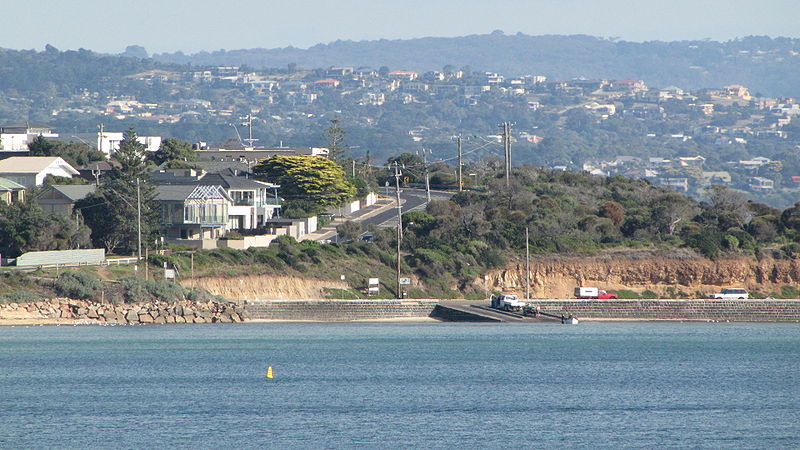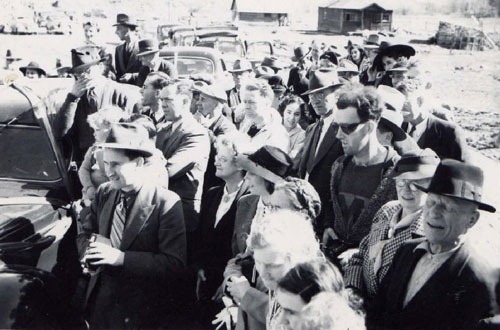 |
 |
 |
 |
Market News
|
 |
 |
Finally we reach the first weekend of the year with enough auctions taking place to give a more accurate feel of current market sentiment. 695 auctions were gazetted to take place this weekend, and some quality stock has been offered for sale resulting in a clearance rate of 66% and 1048 total sales for the week.
We said last week that there is a large discrepancy in the grade of homes currently on the market. A proportion of property which didn't sell last year is stubbornly hanging around, and if you follow the theory that every house has a buyer providing it's offered at the right price, we can only assume many vendors are still either unwilling to 'meet the market' or hanging on for their 'wish price' as-there is no lack of buyers wondering through open for inspections.
An internet search of homes for sale may bring up large numbers of listings, however when you filter the results down as we do each week for our clients, there is only a handful of property that really ticks the right investment criteria. The bottom line - clearly evident from today's bidding experience which produced some bullish results - is that good property is selling for good prices, under healthy competition. However there is enough stock hanging around to keep clearance figures lagging below the 85% rate recorded this time last year.
Assessing - quite correctly - that today's results would stretch budgets, we took advantage of negotiating a number of properties prior to auction this week. However for those listings for which this was not possible, you could be mistaken believing we were back in 2007 pre GFC boom times with bidders clearly showing bullish rather than bearish qualities.
30 Clyde St, Glen Iris - quoting 625-675, was a classic single level modern town house perfect for those downsizing. The event opened on a genuine bid of 630K. The next bid was 750K which placed the property directly on market - precisely where we had assessed its value. With a third bid of 800K a bullish battle ground had been set. In a deliberate play of confidence, the winning bidder jumped upwards in uneven amounts ranging from 5 - 10K until the property had been secured over 100K above reserve for 860K. The winning bidder was a downsizer who seemingly had no limit to the budget they were prepared to spend. Four bidders took part.
Meanwhile a few streets away unit 5/6-8 Beaconsfield Rd, Hawthorn East followed a similar bullish game plan. A beautifully renovated Art Deco two bedroom apartment. The auction opened at 630K. It was swiftly followed with a bid of 725K, and then 800K, before things slowed to a more moderate place. Announced on the market at 810K the bidding managed to push the price over mid 800K. We had previously assessed the property to be worth around 850K, therefore the final selling price of 855K was no surprise. Five bidders took part.
A more modest, but by no means small result was achieved at 24 Douglas St, Rosanna. Quoted in the 'mid 600K' and attracting four bidders. It opened on a vendor bid of 600K and had a slow start before the competition really gained pace.
Announced on the market at 730K the price pushed another 20K before the hammer came down at 751K.
Next week there are near to 1000 homes going under the hammer, and with the RBA still giving out the clouded message that interest rates are not likely to climb in the immediate future, and the media seesawing between 'boom and bust', expect a fairly balanced market - slightly in favour of the vendor - to start to emerge.
Please do not hesitate to call if you are contemplating a property purchase anytime soon
Catherine Cashmore & Ian James
|
 |
 |
Top
|
 |
 |

|
 |
 |
Recent Articles Of Interest
|
 |
 |
Latest REIV Quarterly Median Prices
| |
Dec Qtr
2010 |
% chg
Sept-10 to Dec-10 |
Sept Qtr
2010 |
% chg
Dec-09 to Dec-10 |
Dec Qtr
2009 |
% chg
Dec-05 to Dec-10 |
Dec Qtr
2005 |
| Houses |
$601,500 |
6.9% |
$562,500 |
11.4% |
$540,000 |
62.1% |
$371,000 |
| Units &
Apartments |
$480,000 |
2.6% |
$468,000 |
9.3% |
$439,000 |
57.4% |
$305,000 |
Melbourne median house price tops
$600,000 for the first time.
The REIV has released the December
quarter median prices, revealing that the
median price of a house in Melbourne has
increased by 6.9 per cent to $601,500 from a
revised $562,500 in the September quarter.
REIV CEO Enzo Raimondo said this was the
first time that the median house price had
exceeded $600,000 and it was clear that
housing affordability would be a key issue
this year for buyers and the Victorian
community.
"Increased house prices in the last
quarter and over the last two years are due
to an imbalance between housing supply and
the needs of our growing population.
Read the rest of the article
here (Source: REIV)
Update on the Peninsula Link
Click
here to read the latest updates on the
Peninsula Link.
Work has commenced on the new Peninsula
Link, & due to be completed early 2013.
This new Peninsula Link will make
traveling time from Mornington to the
Eastlink / Mornington Freeway approx.
17mins.
With the already completed Eastlink
taking approx. 30 - 35mins to the CBD,
making travel time easier.
REIV releases median prices for 2010
The REIV has released the 2010 annual median prices, which show that last year was the strongest year for price growth for the Melbourne residential property market since 2001.
REIV CEO Enzo Raimondo said the median price of a house increased by $95,000 from $465,000 in 2009 to $560,000 in 2010 - a 20.4 per cent increase.
"The REIV 2010 medians confirm that 2010 was a very strong year for the Melbourne residential property market.
Read the rest of the article
here (Source: REIV)
Sam James
|  |
 |
Top
|
 |
 |

|
 |
 |
Do we really have one of the world's most expensive real estate markets?
|
 |
 |
Each year we encounter headlines which list Australia as one of the least affordable housing markets in the world. The reports are based on the Annual Demographia International Housing Affordability Survey which is released annually. The survey covers 325 'markets' in Australia, Canada, Hong Kong, Ireland, New Zealand, UK, and USA. The latest report condemns Sydney as the second least affordable market behind Hong Kong which ranks as the least. (Melbourne doesn't fare much better - coming in at number 321.)
Whilst I wouldn't go so far as to suggest Melbourne or Sydney as 'affordable' markets, the report doesn't paint a realistic picture. Comparing Australia to other countries is unreasonably difficult Due to our geographical landscape more than 75% of Australians live in and around the capital and major cities along the Eastern and South Eastern costal planes. The limited land available in these locations, along with a growing population of buyers and immigrants, naturally puts pressure on Australia's metropolitan prices in comparison to the UK and USA. In the USA for example, only roughly 50% of the population live in or near the nation's largest top 20 cities. The same can be said for the UK - Australia is roughly 32 times the size of the UK, and again, unlike Australia, the UK's population is able to spread fairly evenly across the country thereby lessening the number of buyers concentrated around its populated cities.
The second point to take into consideration is the way the data has been equated. The report uses a system called the 'median multiple' which is calculated by dividing the median house price by the gross annual median household income. Straight away however the figures are misconstrued. The median house price is only calculated on detached homes sold in metropolitan regions. It doesn't take into account rural areas, smaller regional cities or unit prices (which would also include townhouses and apartments). However the annual income is calculated over the entire population - so those living in both rural, regional and inner city areas. A more reasonable equation would be to use the median dwelling price across all Australia which would arguably cut the income to house price ratio in half.
According to the Survey 'affordable' house prices should have a ratio of no more than 3 times the average income level. We haven't seen a ratio like that in Australia's metropolitan regions since the 1980's (during which interest rates were significantly higher.) The same can be said for London, for which you'd have to go back to the 1970's to find a ratio at 3 times.
Australian's generally rank home ownership top of the priority list. It's well known we have one of the highest home ownership rates in the developed world along with one of the lowest recorded mortgage default rates. Furthermore, if you compare Australia to London and other European cities you'd find the general cost of living more affordable with petrol prices, eating out, entertainment and travel all well under those offered in other major cities. Therefore, if drawing comparisons, we arguably have more disposable income to put towards a mortgage.
However, all points aside, we do need to address affordability. For those people who already own their own home, news about national house price increases are by no means unwelcome. But we also have a growing generation of Australian's who face the prospect of never owning a property. For the single first home buyer on an average wage, even purchasing a 1 bedroom apartment within 15km of the CBD can present serious difficulties - especially considering most first home buyers have a budget below $300,000. The matter needs to be addressed on a number of different levels and as the report highlights, increasing inner city density isn't going to solve the issue alone. Unless we can feasibly expand Melbourne's boarders, by offering affordable land, as well as increasing infrastructure and transport to newly created suburbs, parents will be left tossing up whether to save for their children's education, or a deposit for their first home.
Catherine Cashmore
|
 |
 |
Top
|
 |
 |

|
 |
 |
Spotlight On Melbourne Suburbs
|
 |
 |
In our regular spotlight section we
examine a selection of Melbourne suburbs,
highlighting what's happening in these areas
right now
Mornington
Municipality:
Mornington Peninsula Shire
Population: 20,821 (2006 census)
Postcode: 3931
Location: 57km from Melbourne CBD
A beautiful seaside suburb situated
57klms South East of the CBD With a relaxing
shopping village with excellent shops,
restaurants & cafes, weekends can be very
busy, and yet so spectacular sitting in
cafes watching the boats go by after a visit
to the local wineries or a day at the
Mornington race track.
While the railway line to Mornington
closed in in 1981, the public transport is
good via a regular bus service. With
Frankston the closest train station 14klms
away.
With the Peninsula Link's works already
started, Mornington will become far more
inviting for families & couples with travel
time to the CBD shortened. At this point the
Nepean Hwy & Moorooduc Hwy are good roads in
& out of Mornington.
Properties vary in the area like many
Melbourne seaside suburbs, from multimillion
dollar large homes with sea views, to estate
homes, & units, also many horse farms &
acreage properties.
Neighbouring suburbs are Mount Eliza,
Mount Martha, Baxter.
Want more info on Mornington click here
visitvictoria.com

Median House Prices
| |
Lower
Quartile |
Dec 10
Median |
Upper
Quartile |
Sep 10
Median |
Dec 09
Median |
Annual
Change |
| Mornington |
$430,250 |
$525,000 |
$709,188 |
$500,500 |
$446,000 |
17.7% |
|
Source: REIV. |
Median Unit Prices
| |
Lower
Quartile |
Dec 10
Median |
Upper
Quartile |
Sep 10
Median |
Dec 09
Median |
Annual
Change |
| Mornington |
$363,750 |
$449,000 |
$637,500 |
$440,000 |
$375,000 |
19.7% |
|
Source: REIV. |
Sam James
|
 |
 |
Top
|
 |
 |

|
 |
 |
Will The Floods Have A Long Term Downward Effect On The Market?
|
 |
 |
Whatever the fallout from the floods, and the initial impact on the Australian economy, there's unlikely to be a 'long term' detrimental effect on real estate prices - even for those homes sitting in some of the worst flood hit areas.
The recovery after the Brisbane floods in 1974 bares remarkable similarity to the recent deluge, and outlines yet again the unique resilience and ability of Australian's to overcome disaster, pull together, and 'rebuild'. As residents living in Goodna at the time recalled; "Nobody forced you to take in another family, everyone just did it. Hundreds of millions of dollars was raised throughout Australia." Less than a year later Insurance companies criticized councils for once again allowing residents to rebuild houses in flood prone areas. They argued passionately that it was impossible for every insurance company to insure against floods without premiums rising considerably. A 1975 report compiled for the general insurance company stated, "the concept of insurance is founded on the principle of insuring against an unlikely event", however "flood insurance is generally a case of insuring against a certain event" and many insurance companies were simply not prepared to do that. However despite the lack of appropriate insurance, buyers were not deterred from purchasing in the flooded zones.
In a recent interview, Brisbane's mayor Campbell Newman cited conversations he'd conducted with locals who stressed their strong desire to rebuild despite risks of another wipe out. Premier Anna Bligh, anticipating an outcry over the sensitive subject of reconstruction, stressed no one would be forced to relocate homes to safer areas. More likely are enforced changes to improve housing infrastructure - which will add value rather than diminish it.
Reports from some of the smaller flooded towns are also upbeat. Recent sales in Bundaburg show prices holding steady, and Rockhampton is also reporting little downturn in buyer activity. Lessons learnt from other disasters tell a similar tale. Just over a year after the Christchurch, New Zealand earthquake, and buyers are once again competing for properties in what's been described as a 'tight market'. There would be few who remember the great Melbourne flood of 1934, which covered houses in suburbs as far inland as Richmond and Prahran - killing 18 and rendering 6000 homeless. Protection systems were developed to reduce the risk of re-occurrence, however the Environment Protection Authority have since stated, an event on the scale of the 1934 floods could cause failure of 'existing systems' which may lead to a disaster on a 'greater scale' than witnessed previously. It's worth noting that this Land falls in zones with a 'flood inundation overlay' - evidence of which is contained in the vendor statement of each property sold. However the zoning doesn't deter prospective buyers, or deflate prices.
Home ownership continues to hold a special place in the Australian psyche. For Australians, it's more than just the essential need for accommodation, it's a reflection of the pride they hold inwardly over owning their own piece of Aussie land. A quote from 'The Castle' sums it up perfectly "It's not a house, it's a home."
Australian's don't give up their houses easily - it's one of the reasons house prices in Australia are more likely to stagnate for periods of time than drop. Most vendors will 'hold' rather than sell in a downward market, and the value Australian's place on their property is heavy with romantic aspiration.
In 1942 Sir Robert Menzies famously said - "One of the best instincts in us, is that which induces us to have one little piece of earth with a house, and a garden which is ours" And in 1974 Gough Whitlam aroused similar passions in his 'It's Time' speech
"The land is the basic property of the Australian people. It is the people's land, and we will fight for the right of all Australian people to have access to it..."
This is why, more so than any other country, the larger proportion of Australians either own their own home, or hold a mortgage, with only 22% of the population renting privately. A rising population and short land supply in the most populated areas surrounding our capital cities, has done little to diminish that dream. Even with housing affordability at record levels and onward effects resulting from the GFC, there has been little long term effect on the market. So despite short term blips in our economy, Anna Bligh's words ring strong "We are going to rebuild..." and "We are going to rebuild it bigger and better than it was before..."
Catherine Cashmore
|
 |
 |
Top
|
 |
 |

|
 |
 |
Technology Monthly
|
 |
 |
Please feel free to send me any comments
about the new design of the newsletter...whether you like it
or not or any suggestions you have to
improve it.
John Titor
Ever since the internet was created it
has been the place of hoax and rumor and the
idea of time travel is no exception. From
buying a time machine on eBay and Craigslist
(here,
here &
here ) to pictures of time travelers
appearing in old photos and films (pictures
at bottom of article)
Perhaps no time travel theory has been as widely publicized as John
Titor, who appeared in November 2000 and posted on a public forum that
he was a time traveller from the year 2036....at first this was just
shrugged off as a hoax, but as time went on and John started to post
pictures of his time machine and answer questions posed by fellow forum
members, people began to take notice.
Apparently in John's timeline, World War III had occurred in the year
2015 killing nearly 3 billion people leaving the ones who survived to
work together and rebuild, helping them become a more peaceful
civilization. John's mission was to go back to 1975 to retrieve an IBM
5100 personal computer, which was needed to debug some vintage computer
code in his time that could not be read by his modern computers. He then
stopped in the year 2000 where he was living with his family and his 2
year old self.
On March 21st 2001, John said he would be returning to 2036 and after
that he was never heard from again.
While John was here he made some strange and scary predictions, most
of which have not happened, but some say he left secret messages with
other predictions that have in fact come true, including being the
reason Y2k never occurred. There are many websites online with supposed
proof for and against John and both make compelling arguments.
Whether or not it was a hoax, John Titor remains on of the internet's
greatest mysteries.
More info can be found at the official website
here and you can see some of the scanned images and pictures of the 'time
machine' John himself posted
here.


Top: Time travelling hipster in
1940's photo.
Bottom: Woman appearing to talk
into a mobile phone in the 1928 Charlie Chaplin film 'The Circus'
(Click either image for a closer look)
*Images from
forgetomori.com,
popherald.com &
dailymail.co.uk
Chris Thursfield
|
 |
 |
Top
|
 |
 |

|
 |
 |
Recipe: Chocolate Caramel Brownie Hearts
|
 |
 |
Ingredients:

- 150g butter, chopped
- 180g dark chocolate, chopped
- 1/2 cup caster sugar
- 2 eggs, lightly beaten
- 1 1/4 cups plain flour
- 2 tbsp. cocoa powder
- 220g-block caramello chocolate, frozen, chopped
- Cocoa powder, to decorate
Method:
1. Preheat oven to 180 degrees C / 160 degrees C fan-forced.
Grease a 18cm x 28cm rectangular slice pan. Line base and sides
with baking paper, allowing a 2cm overhang a long ends.
2. Place butter and dark chocolate in a medium saucepan over
medium heat. Cook, stirring for 3 to 5 minutes or until smooth.
Remove from heat. Stir in sugar. Set aside for 5 minutes.
3. Whisk eggs into chocolate mixture until combined. Add
sifted flour and cocoa. Whisk to combine. Fold in caramello
chocolate. Spread mixture into prepared pan. Bake for 20 minutes
or until top is firm to touch.
4. Set aside to cool completely.
5. Using a 5cm heart-shaped cutter, cut brownie shapes. Serve
dusted with cocoa powder.
*Recipe From
taste.com.au
Chris Thursfield
|
 |
 |
Top
|
 |
 |

|
 |
 |
Kind regards from the team at JPP.
If you have a friend or family member looking for property,
please feel free to forward our newsletter on to them.
Don't forget to comment on our
blog.
JPP are now on
Facebook and
Twitter...We will be updating them both frequently from now on.
For our overseas clients and visitors, JPP now has a website
translator. Just scroll to the bottom of the homepage, click
'Translate this website' select your language and then click 'Click
here to return to the homepage'.
Having trouble viewing this newsletter? The online version with
pictures is available
Here.
|
|
 |
|
